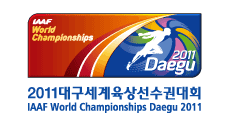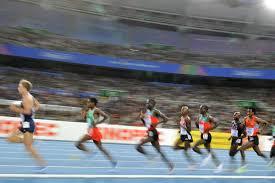So what's more disturbing: The revelation that roughly a third of the athletes at the 2011 track world championships were doping – undetected – or that it took six years for the news of such a remarkable breakdown to become public?
If this was a race, using the sport's parlance, you might say they'd break the tape simultaneously.
But while you mull that over, for your consideration here's what took place.
Using anonymous questionnaires, a study was conducted that involved more than 2,100 athletes combined from the track championship as well as the 2011 Pan-Arab Games. Following their performances, and given the choice of whether to answer, they were presented with this question:
"Have you knowingly violated anti-doping regulations by using a prohibited substance or method in the last 12 months?"
The feedback was unexpected, to say the least. Researchers determined that 31 percent of the athletes who participated in the track championships, held in Daegu, South Korea, admitted to taking banned substances, while between 45 to 49 percent of Pan-Arab participants in Doha, Qatar did as well.
 And those figures are based only on those who took the survey, so officials believe the percentages of undetected doping were even higher, if you can believe it.
And those figures are based only on those who took the survey, so officials believe the percentages of undetected doping were even higher, if you can believe it.
News reports say that a combined 5,187 athletes competed in those two Games, and of the drug tests administered only half of one percent – 1 in 200 – tested positive in South Korea, while just 3.6 percent were flagged in Qatar.
Amazing. Given these revelations of how easily athletes remained one step ahead of regulators back then, organizers might consider jointly renaming those events the Evasion Championships.
“The study shows that biological tests of blood and urine reveal only a fraction of doping cases,” said Harvard Medical School's Harrison Pope, a professor of psychiatry, as reported by Reuters.
With athletes coming from all over the globe the survey was translated into 21 languages. And more than 93 percent of those approached with the survey agreed to participate.
Now, as for the other part of this equation, why were these findings kept from the public for six years, (which, essentially, is an epoch when it comes to the advances in doping techniques and improvement in testing for performance enhancers)?
The study's authors say it was due to their negotiations with the IAAF, the International Association of Athletics Federations, the sport's governing body, as to how the results would be published. In addition, there were prolonged disagreements over disclosure between the IAAF and the World Anti-Doping Agency, which oversees this controversial area of athletic compliance.
Officials contend that doping is far less prevalent today than it was in 2011, citing better detection techniques that have narrowed the gap with the cheaters.
"It's a snapshot of the time," said Michel Audran, who runs WADA's labs in France, referring to the study, as reported by the Associated Press. "In my opinion, it has diminished a lot since then."
While that may be true, it's quite convenient for sporting officials to offer that assessment while distancing themselves from the stunning results of the study's survey, which was conducted by researchers from Harvard Medical School and the University of Tuebingen in Germany and published Tuesday in Sports Medicine magazine.
And while there may be more charitable explanations for the long delay, it's very hard to avoid the most obvious reason: track's widespread inability to catch the dopers, and the necessity to bury the embarrassing results for as long as possible.




